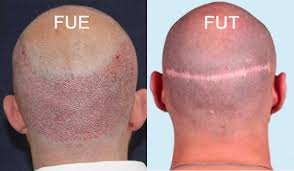
Why FUE Is Much Better Then FUT Hair Transplant
Share
Why is FUE Better than FUT Hair Transplant?
When it comes to hair restoration, two popular methods are often compared: Follicular Unit Extraction (FUE) and Follicular Unit Transplantation (FUT). While both techniques aim to achieve natural-looking results, FUE has gained significant popularity for various reasons. In this blog, we’ll explore why many patients and specialists consider FUE to be the superior choice over FUT.
Understanding FUE and FUT
Before diving into the advantages of FUE, it’s essential to understand the basic differences between the two techniques:
-
FUE (Follicular Unit Extraction): This method involves extracting individual hair follicles from the donor area, typically the back or sides of the scalp, using a specialized punch tool. The follicles are then transplanted into the thinning or balding areas.
-
FUT (Follicular Unit Transplantation): FUT, also known as the strip method, involves removing a strip of skin containing hair follicles from the donor area. The strip is then dissected into individual follicular units for transplantation.
Advantages of FUE Over FUT
-
Minimally Invasive: One of the most significant benefits of FUE is that it is less invasive than FUT. Since FUE extracts individual follicles, there is no need for a large incision, which means reduced trauma to the scalp.
-
No Linear Scarring: FUT typically results in a linear scar at the donor site, which can be a concern for those who prefer shorter hairstyles. In contrast, FUE leaves tiny, scattered scars that are virtually undetectable, making it a more attractive option for many patients.
-
Faster Recovery Time: Patients who undergo FUE usually experience a quicker recovery period compared to those who opt for FUT. While both methods have some downtime, FUE allows patients to return to their daily activities sooner, often within a few days.
-
Less Discomfort: Many patients report less discomfort with FUE than with FUT. The extraction of individual follicles generally causes less post-operative pain and discomfort than the removal of a strip of skin.
-
Natural Results: FUE allows for more precise placement of individual hair follicles, enabling the surgeon to create a more natural-looking hairline and density. This meticulous approach helps mimic the natural growth pattern of hair.
-
Versatility: FUE can be a suitable option for patients with different hair types, as well as for those who may have limited donor hair due to previous surgeries or scarring. It can also be used for various areas of the body, including facial hair and body hair restoration.
-
Less Risk of Complications: Since FUE is less invasive, there tends to be a lower risk of complications, such as infection and excessive bleeding. This can contribute to a smoother overall experience and outcome.
Considerations
While FUE has many advantages, it’s important to note that it may not be the best option for everyone. Factors such as the extent of hair loss, hair type, and individual medical history can influence the decision between FUE and FUT. Consulting with a qualified hair restoration specialist can help determine the most suitable method for your specific needs.
Conclusion
In the battle of FUE versus FUT, FUE often comes out on top due to its minimally invasive nature, faster recovery time, and the natural-looking results it can achieve. For many individuals seeking hair restoration, FUE offers a blend of efficiency and effectiveness that makes it a preferred choice. If you’re considering a hair transplant, it’s essential to explore your options and consult with a trusted specialist to find the best solution for your hair restoration journey.
